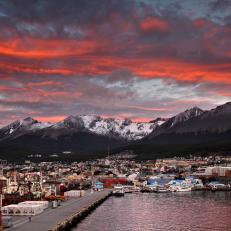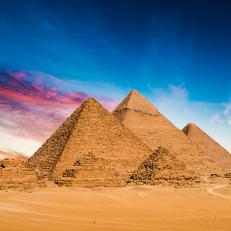Meet the Women of the Deep
Meet the intrepid women of The Explorers Club who explore the deep sea and create tools to increase our understanding of the vast, uncharted depths of our blue planet.
Don't miss the panel discussion, “Women of the Deep,” streaming live on explorers.org, on Tuesday, April 27 at 7PM ET.

Vicki Ferrini
Oceanographer Vicki Ferrini studies the planet’s hydrothermal and volcanic activity, both above and below the sea - she's pictured here in front of a hot spring at Lake Rotomahana in New Zealand.
Vicki Ferrini
Though the ocean covers over 70% of our planet, oceanographer Vicki Ferrini points out that it remains largely unmapped. Her research on seafloor characterization contributes to national and global efforts to reveal, explore and understand the seafloor.
Vicki Ferrini
Vicki Ferrini, oceanographer at Lamont-Doherty Earth Observatory shares the discovery of an underwater volcano beneath a newly formed island in Tonga, depicted in this subsea map created with data acquired on the Schmidt Ocean Institute's RV Falkor.
Jenifer Austin
Google Ocean founder, Jenifer Austin, after the launch of Underwater Street View in Google Maps, is pictured at the Google Liquid Galaxy with deep-sea explorer Dr. Bob Ballard, who discovered the Titanic.
Jenifer Austin
Jenifer Austin shares Underwater Street View in Google Maps at the Liquid Galaxy display with a crowd of onlookers at the Oceanographic Museum of Monaco.
Jenifer Austin
Explorer Jenifer Austin descends in an Undersea Hunter DeepSee submarine on one of the first deep-sea dives in the Coiba marine protected area in Panama.
Jenifer Austin
Jenifer Austin points out new underwater terrain from MBARI, where the asteroid that wiped out the dinosaurs hit off the Yucatan peninsula, added to the Ocean in Google Earth and depicted on the Liquid Galaxy display.
Dr. Edith Widder
Bioluminescence scientist and submersible pilot Dr. Edith Widder, CEO and senior scientist at the Ocean Research & Conservation Association, develops technologies used to capture deep sea images that are leading to major discoveries about life in the deep sea.
Dr. Edith Widder
Oceanographer Edith Widder has studied the deep-sea jellyfish Atolla wyvillei, pictured here, that produce a bioluminescent pinwheel display.
Dr. Edith Widder
Dr. Edith Widder replicated the jellyfish's bioluminescent display as an electronic lure to attract the elusive Giant Squid. It worked. Widder captured it on camera in its natural habitat for the first time in history.
Dawn Wright
"Deepsea Dawn” oceanographer Dawn Wright of Environmental Systems Research Institute (ESRI) offshore La Jolla, California, aboard a Scripps Institution of Oceanography vessel for the filming of “Let Science Speak”
Dawn Wright
Oceanographer Dawn Wright makes a deep dive in the submersible Alvin to the East Pacific Rise hot spot, a mid-oceanic ridge along the floor of the Pacific Ocean, separating the tectonic Pacific Plate to the west from the North American Plate, the Rivera Plate, the Cocos Plate, the Nazca Plate, and the Antarctic Plate. She was the first African - American to descend to the bottom of the sea in the Alvin.
Dawn Wright
On an expedition by Dawn Wright to the deep seafloor of the East Pacific Rise, tubeworms are discovered surrounding a hydrothermal vent teeming with life. Her oceanographic career has taken her to the depths of our blue planet where she has explored and discovered some of the seafloor's most active areas in terms of volcanic and tectonic activity.
Martha Shaw
Earth scientist Martha Shaw studies sedimentation processes in the deep sea and coastal ocean under the influence of ocean forces. With rising seas, erosion of coastlines, and threats to mangroves and coral reefs, much can be learned from the planet’s geologic record of changes in sea level.
Martha Shaw
Captivated by the magnificent forms of nature found on the seafloor, Martha Shaw explores polluted and pristine marine environments to communicate why we should protect them.











.JPG.rend.hgtvcom.231.231.suffix/1621523997934.jpeg)












